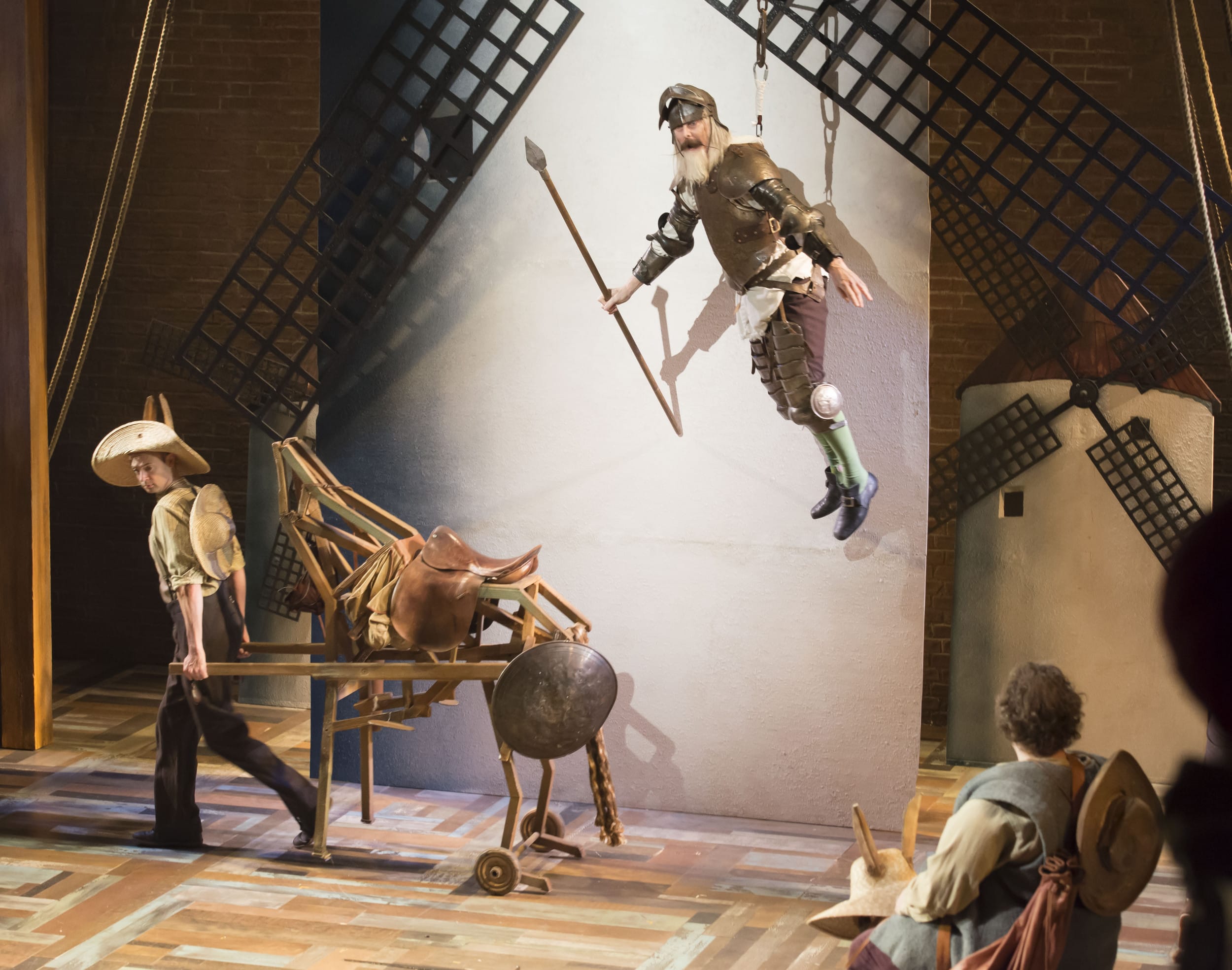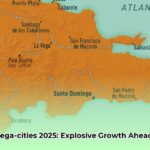Imagine a knight, fully armored, charging towards… windmills. Sounds absurd, right? Don Quixote’s famous battle in Cervantes’ masterpiece is far more than just slapstick humor; it’s a richly symbolic scene that continues to resonate centuries later. This article explores the scene’s literary significance, its cultural impact, and its enduring relevance to the human condition.
Don Quixote vs. Windmills: A Clash of Ideals and Reality
Let’s dive into one of literature’s most memorable moments: Don Quixote’s legendary encounter with windmills. This isn’t simply a humorous misadventure; it’s a powerful reflection on the human experience, showcasing the often-painful collision between our dreams and the realities of life.
The Iconic Scene: A Knight’s Miscalculation
Cervantes’ Don Quixote opens with a bang—or perhaps a thwack. A pivotal chapter plunges us into the action: Don Quixote, convinced he faces gigantic enemies, charges at what are, in reality, ordinary windmills. His loyal, though more pragmatic, squire Sancho Panza tries desperately to warn him. The outcome is predictable: Quixote’s lance shatters, his armor suffers, and his grand illusion is brutally deflated. While comical, this scene’s significance reaches far beyond mere amusement.
Symbolism: Unveiling Profound Meanings
Those windmills are far more than just windmills. They likely represent the ever-present tension between our dreams and the constraints of reality. Don Quixote’s unwavering faith in his chivalric fantasies clashes violently with the mundane truth. The scene powerfully symbolizes the human tendency to misinterpret reality, to engage in battles that are ultimately unreal. Have you ever felt like you were tilting at windmills? You’re not alone.
A Phrase for the Ages: “Tilting at Windmills”
The phrase “tilting at windmills,” coined in Cervantes’ 1605 novel, has become deeply ingrained in our language. We use it to describe anyone pursuing impossible goals or fighting imaginary foes. From politicians making unrealistic promises to individuals battling inner demons, the phrase retains its remarkable relevance today.
Don Quixote: Hero or Delusional Idealist?
Don Quixote’s character is complex. He embodies unwavering idealism—a stubborn belief in his romanticized vision of knighthood. Simultaneously, he’s undeniably delusional, his misinterpretations of reality both humorous and tragic. Despite his misguided beliefs, there’s a heroic aspect to his steadfast conviction. He demonstrates tenacity even when facing absurdity. His stubborn spirit likely resonates with us on some level, reminding us of our own struggles with perception and reality.
Artistic Echoes: A Legacy in Art and Film
The impact of this scene extends far beyond the pages of Cervantes’ book. Artists have been captivated by it for centuries. Countless paintings, sculptures, and film adaptations attempt to capture the drama, humor, and lasting symbolic meaning of the moment.
| Artist/Work | Medium | Year (approx.) | Description |
|---|---|---|---|
| Gustave Doré | Illustration | 1863 | A powerful depiction of the fight, making the windmills appear truly gigantic and menacing. |
| Various Film Adaptations | Film | Various | Numerous films have recreated the scene, often adding their own unique interpretations. |
| Francisco Goya (various) | Paintings | Late 18th cent. | Several of Goya’s works subtly allude to themes explored in Don Quixote’s adventures. |
Enduring Relevance: The Universal Struggle
The scene’s enduring popularity stems from the timelessness of its core themes. We still grapple with the conflict between what we want to believe and the reality we face, from politicians setting unrealistic goals to individuals combating injustices and our own internal biases.
The scene’s power lies in its universality. It touches upon the core of the human condition—the blend of folly and heroism within each of us. The ongoing research and varied interpretations of this iconic scene suggest its meaning will continue to evolve, resonating with readers for generations to come.
Why Does Don Quixote Fight the Windmills? A Deeper Dive
Why does Don Quixote charge at those windmills? It’s not merely because he’s mad, although that’s certainly a significant factor. It’s primarily about his unwavering belief in a reality vastly different from our own—a reality where terrifying giants replace ordinary windmills. His attacks are heroic quests in his mind, while appearing comical and dangerous to us. This fundamental difference in perception is key to understanding his actions.
Cervantes’s Chapter VIII isn’t a random event; it’s arguably the defining moment of Don Quixote’s journey. This chapter showcases the epic clash between fervent idealism and unyielding reality. The broken lance symbolizes the futility of his misguided, yet heartfelt, crusade.
The windmills themselves hold various symbolic meanings. Some might view them as common life obstacles, everyday hurdles derailing our progress, or perhaps even symbols of the ever-shifting nature of truth. Some experts believe they represent the elusive, ever-changing nature of truth itself. There is ongoing debate about the exact interpretation of the scene.
The phrase “tilting at windmills” perfectly encapsulates the human tendency to engage in futile struggles, whether in political arguments or personal conflicts. This idiom accurately reflects a universal human experience that transcends time and culture.
Cervantes wasn’t merely aiming for humor; he was offering a profound statement about human nature. The author masterfully portrays how easily we become lost in our fantasies, and how self-deception can blind us to the truth. He subtly suggests that both unwavering idealism and grounded realism have their place in life. Don Quixote’s unique worldview leads him to perceive those windmills as something entirely different — as fearsome giants deserving of a knight’s attention.
From a psychological standpoint, Don Quixote’s actions might be viewed as a form of escapism, a rebellion against the monotony of everyday life, or an attempt to create meaning in a world he considers meaningless. Possibly, these behaviors serve as a coping mechanism, avoiding the harsh realities of his existence. This complex character study compels us to question the boundaries between fantasy and reality, madness and heroism.
Different perspectives exist. Some scholars argue that Don Quixote’s behavior is purely a manifestation of mental illness, while others see him as a tragic figure whose unwavering idealism prevents him from seeing the world clearly. Still others suggest he represents the power of imagination and the importance of holding onto dreams, even when facing overwhelming odds. Ongoing research may reveal further interpretations.
The enduring power of this scene lies in its capacity to inspire a wide range of interpretations. It’s a story that will likely continue to invite readers to ponder the complexities of human nature and the blurry line between courage and folly.
Here’s a summary table highlighting these different perspectives on the symbolism:
| Interpretation | Symbolism | Supporting Evidence |
|---|---|---|
| Literal Interpretation | Windmills are literally perceived as giants | Don Quixote’s descriptions and Sancho Panza’s reactions. |
| Symbolic of Life Obstacles | Windmills represent challenges and difficulties | The struggle and eventual failure highlight the difficulty of achieving ideals. |
| Symbolic of Elusive Truth | Windmills represent the shifting nature of reality | The wind’s changeable nature mirrors the instability inherent in truth seeking. |
| Symbolic of Idealism vs. Reality | The clash between Don Quixote’s vision and reality | The contrast between his perception and the actual windmills. |
| Psychological Interpretation | Escapism, a coping mechanism, or mental illness | Don Quixote’s behavior and the overall narrative arc. |
The enduring legacy is its capacity to prompt ongoing debate and discussion. The scene resonates with readers because it addresses timeless themes—the conflict between idealism and reality, the power of perception, and the human quest for meaning. It’s a testament to Cervantes’ literary genius that these questions persist centuries later.
What Does “Tilting at Windmills” Mean? A Deeper Look at the Idiom
Let’s delve deeper into the scene where Don Quixote mistakes windmills for giants. While humorous, it’s a powerful symbol that has endured for centuries.
Don Quixote wasn’t merely irrational; he was passionately committed to his ideals of chivalry. His imagination, fueled by the books he’d consumed, powerfully distorted his perception of reality. Ordinary windmills transformed into monstrous foes. This is a striking example of how beliefs can cloud judgment and lead to seeing things that simply aren’t there. Was he entirely delusional? Perhaps not. His deep commitment to his ideals, even in the face of obvious absurdity, makes him both tragically flawed and compelling. He reminds us that passions can sometimes blind us to the truth.
The phrase “tilting at windmills” became a figurative expression, used to describe anyone chasing impossible dreams, fighting unwinnable battles, or misinterpreting reality. It perfectly describes someone stubbornly pursuing something unrealistic, or even impossible. Its enduring popularity speaks volumes about Cervantes’ skillful capture of a fundamental human experience – the pursuit of the unattainable. We’ve likely all experienced our own “windmill” moments.
The windmills themselves symbolize more than just rotating blades. Some might see them as representing societal expectations or unrealistic ambitions. Others may view them as metaphors for life’s unpredictable nature. The symbolism’s beauty lies in its openness to interpretation; the meaning resonates differently depending on the reader and their perspective.
The image remains relevant today. Consider politicians making impossible promises, businesses investing in doomed ventures, or even our own lives – how many times have we chased a dream knowing it was a long shot? The phrase’s resonance stems from the universal experience of struggling against insurmountable odds.
Ultimately, Don Quixote’s story encourages us to reflect on ourselves. Understanding “tilting at windmills” allows us to better evaluate our goals, motivations, and actions. It’s a call to critically assess our own battles, challenging us to determine whether we’re fighting the right fights and whether our beliefs are clouding our judgment.
Key Lessons from Don Quixote’s Misadventure:
| Lesson | Explanation |
|---|---|
| Idealism vs. Reality | Highlights the often-painful conflict between dreams and reality, emphasizing the need for a balanced approach. |
| Futility of Impossible Goals | Symbolizes wasted effort on unachievable pursuits, prompting reflection on priorities. |
| Power of Imagination and Misperception | Shows how powerful imagination, while valuable, can distort our perception of the world. |
| Self-Reflection and Personal Growth | Encourages self-examination to identify self-defeating behaviors and align actions with reality. |
The story is more than a funny tale; it’s a timeless reflection on the human condition. It invites us to examine our own follies and strive to perceive the reality of the world accurately rather than what we hope it might be. And perhaps most importantly, to fight the battles worth fighting.
The Moral of the Story: Lessons from Don Quixote’s Windmill Encounter
Don Quixote’s windmill encounter, far from being a simple anecdote, offers profound insights into the human condition. It’s a powerful exploration of idealism, realism, and the importance of self-awareness.
The scene is pivotal, not just for humor, but for its depiction of the constant struggle between aspirations and reality. Don Quixote’s flamboyant (and painful) failure highlights the importance of balancing passionate pursuits with a grounded sense of reality. It’s a universally relatable experience—striving for something ultimately impossible.
The phrase “tilting at windmills” succinctly captures this struggle; it’s a common idiom reflecting our persistent tendency to chase unattainable dreams or fight imaginary enemies. Its enduring use highlights its resonance across time and cultures. It serves as a reminder of the challenges life presents and the need to approach those challenges realistically.
The contrasting personalities of Don Quixote and Sancho Panza are crucial. Don Quixote represents unwavering, almost delusional idealism, while Sancho embodies practicality and grounded reasoning. Their dynamic teaches us about the necessary balance between pursuing dreams and accepting limitations. Sancho acts as not only a companion to Don Quixote, but a crucial counterpoint to his often-unrealistic views.
The windmills themselves are rich in symbolic meaning; they might represent misleading appearances, flawed perceptions, or self-imposed struggles stemming from ignoring practicality. This interpretation is widely accepted among literary scholars.
The key takeaway isn’t about abandoning dreams, but about cultivating realism. It’s about pursuing goals with passion while recognizing limitations and learning from mistakes. It’s about achieving a sensible blend of idealism and practicality.
This story provides a valuable lesson; it encourages us to evaluate our goals, ensure they are grounded in reality, learn from our mistakes, and strive for a more balanced approach to life’s challenges. The story’s enduring appeal suggests that human nature hasn’t changed much; the struggle between idealism and pragmatism continues. Perhaps this is the greatest lesson of all: the need for self-reflection and an honest assessment of where we focus our energies.
Key Lessons from Don Quixote and the Windmills:
| Lesson | Explanation |
|---|---|
| Idealism vs. Realism | Shows the importance of balancing ambitious pursuits with a grounded understanding of reality. |
| Perception and Misjudgment** | Our perceptions can be deceptive, leading to misinterpretations and the pursuit of unrealistic goals. |
| The Value of Pragmatism** | The practical approach is crucial for navigating life’s challenges. |
| Learning from Mistakes** | Don Quixote’s failures highlight the importance of learning and adapting. |
| Universal Relevance** | The story’s lasting impact reveals that the tension between dreams and reality remains a constant struggle. |
The ongoing discussion surrounding Don Quixote’s adventures continues to provide new perspectives on the balance between idealism and pragmatism. There remains much to be explored in understanding the full impact of this timeless tale. Further research may offer even more nuanced perspectives on the significance of this iconic scene.
Uncover the rebellious spirit of a Dadaist Jean and then prepare yourself for the thrilling, action-packed tale of the Deadly Strike of the Hydra, a narrative so gripping, it will leave you breathless!
- 1 Liter to Fluid Ounces: Easy Conversion Guide - April 9, 2025
- Unlock what is the seventh month: A Cross-Cultural Calendar Guide - April 9, 2025
- Discover White Fruits: Ultimate Guide to Taste & Nutrition - April 8, 2025
















